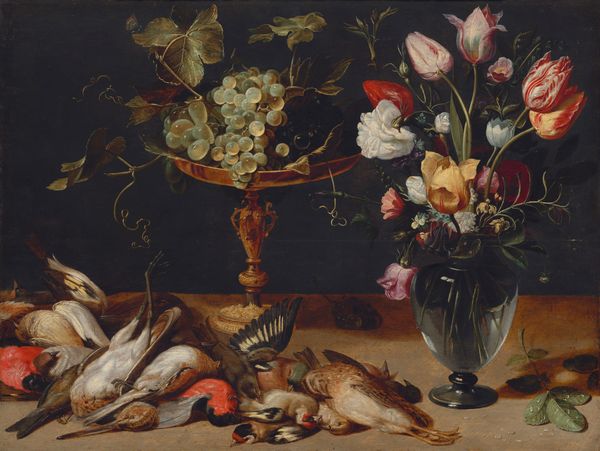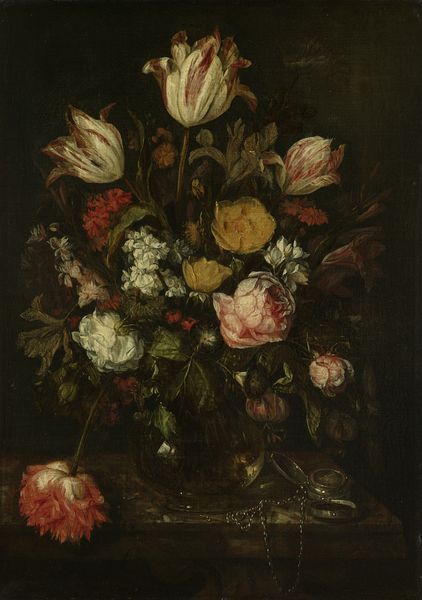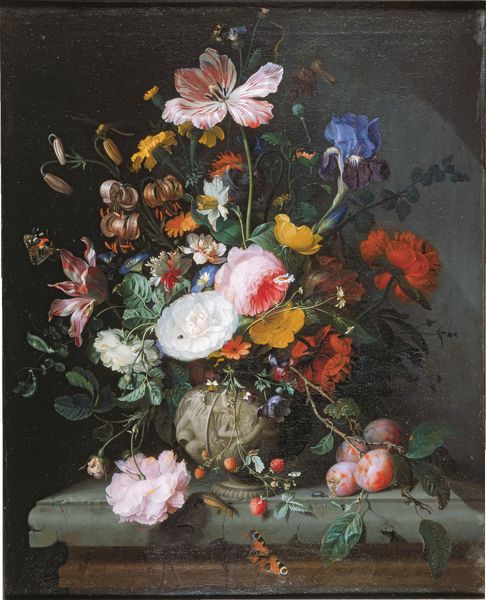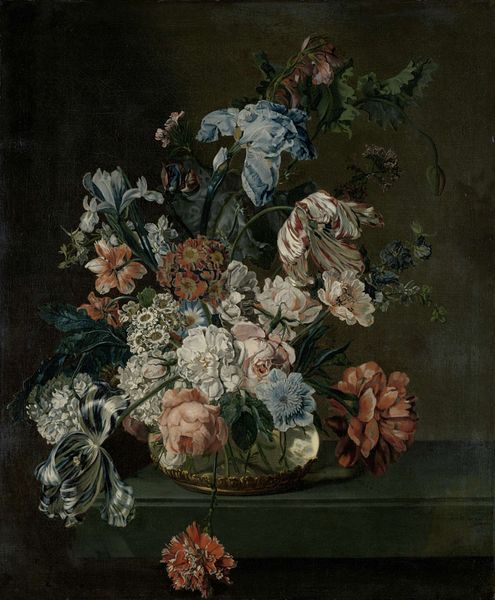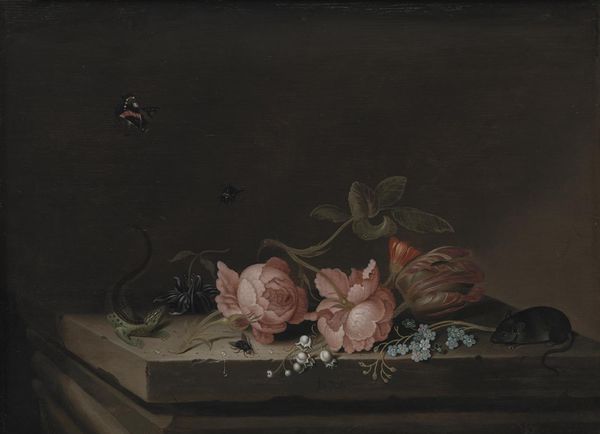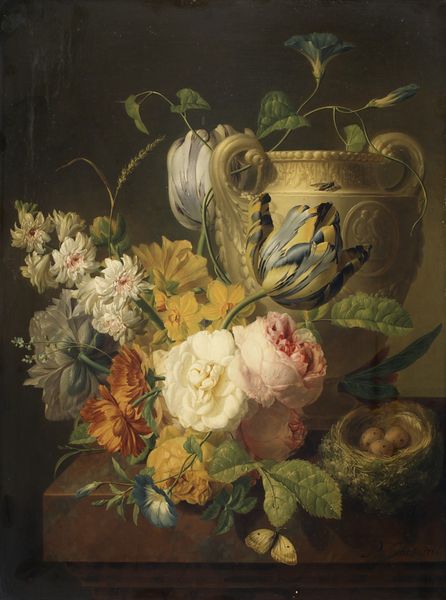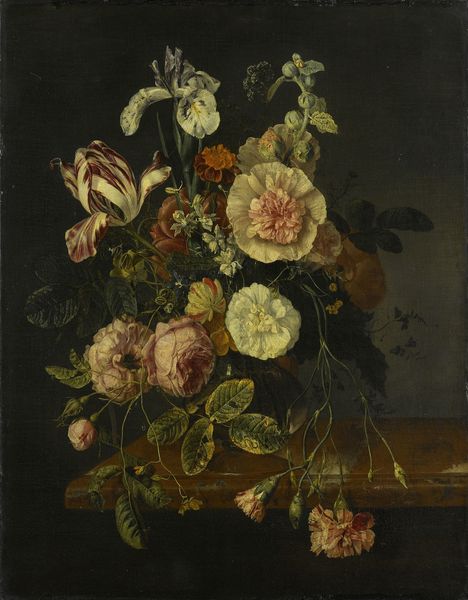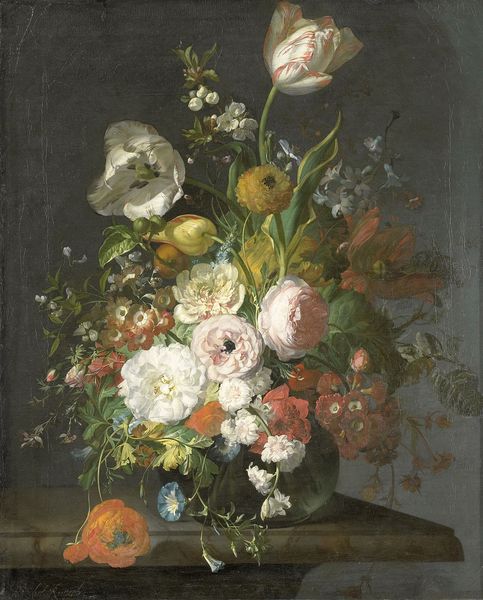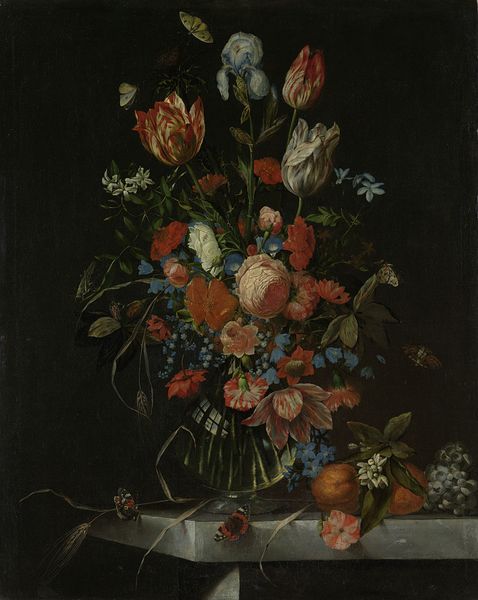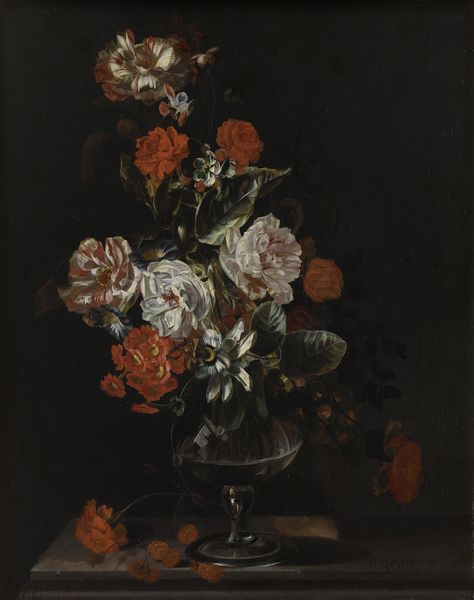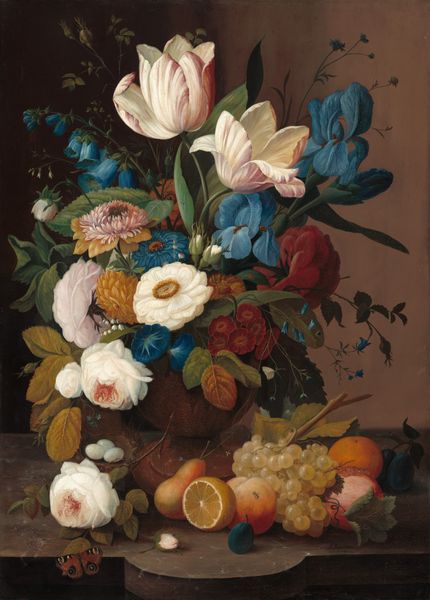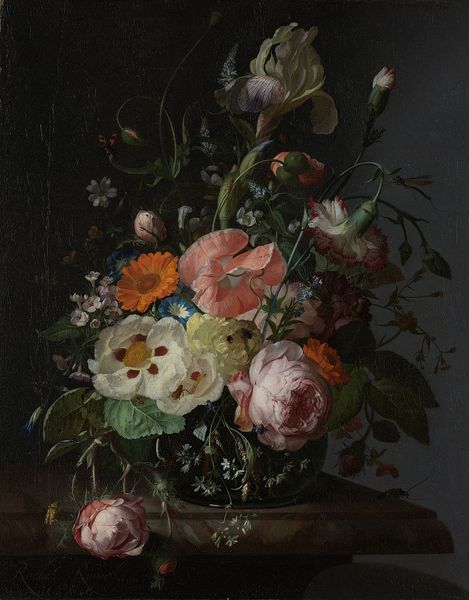
painting, oil-paint, oil, wood
#
16_19th-century
#
animal
#
painting
#
oil-paint
#
oil
#
bird
#
flower
#
oil painting
#
wood
#
realism
Dimensions: 19.0 x 24.8 cm
Copyright: Public Domain
Curator: What a stark image. The starkness is amplified by what feels like a muted palette. Editor: Indeed. Here we have Louis Eysen’s 1882 painting, “Dead Bird and Two Roses on a Table Board,” currently held at the Städel Museum. It’s an oil on wood, rendered in a style associated with realism. Curator: Realism definitely comes to mind, especially with the table’s material showing its use, wear and tear. This is very telling because it is not a classical polished setting that an allegory requires; this composition looks to be on old material itself. And the fact that Eysen chose wood as the support, speaks volumes to the work's presentation of nature. Editor: Precisely. Consider the socio-political context; realism gained traction as a movement partly by rejecting Romantic idealism. There was a move to show everyday life as it was experienced by average people. Still life had always been appreciated. Were there now undercurrents in what might appear at first as an ordinary composition? Curator: Well, it certainly doesn't shy away from mortality. The dead bird contrasts vividly with the roses, evoking thoughts about beauty and decay. I mean, look at how the artist rendered the feathers, their texture, against the smoother surfaces of the wilting petals. One almost sees value assigned to one stage of a life cycle against another. Editor: Yes, and what was the artist's intention in creating this piece for public consumption? Were they critiquing societal views on fragility? We often frame still life painting as inherently linked to prosperity, luxury and consumption—but with what he shows, Eysen adds in a dimension of decline. Curator: Right. He’s really making the viewer grapple with their place within nature. This still life does away with glamour; it speaks of the transience that characterizes both fauna and flora as nothing lasts forever. It really is a profound work when you think of what is revealed within the choice of everyday materials. Editor: I concur. Eysen’s image serves as a potent commentary of life through a simple juxtaposition and artistic execution. It offers viewers of his time and us now much more than just an aesthetic experience. Curator: Exactly, a masterful still life imbued with multiple dimensions through precise, almost cold consideration for what has inherent worth.
Comments
No comments
Be the first to comment and join the conversation on the ultimate creative platform.
